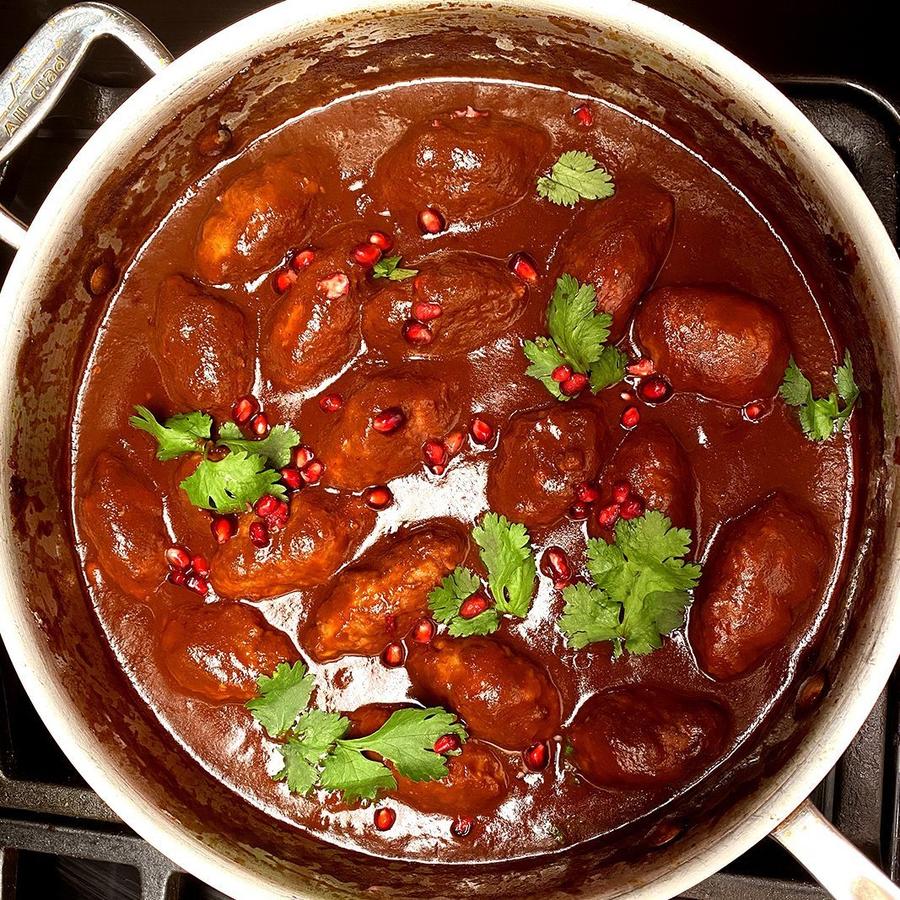Meatball dishes are popular in many cuisines around the world and some of the earliest recordings of meatball recipes can be found in Arabic cookbooks dating back to medieval times. During the period of Muslim rule in the Iberian Peninsula (beginning in the early 8th century) the Arabs introduced their meatball stews to Spain and Portugal. The word albóndigas that continues to be used in Spanish-speaking communities today derives from the Arabic al bindaq meaning “hazelnut,” referring to its round shape. Later in the 16th century Spanish conquistadors began exploring and invading the Americas and parts of the Caribbean, spreading their language, culture, and albóndigas recipes. Conversos and crypto-Jews who managed to escape the ongoing Inquisitions by joining some of these Spanish expeditions also helped to make albóndigas a staple in South America.
The Jews living in Iberia during Arabic rule were likely introduced to this meatball stew concept and over time began creating their own versions. Sephardic Jews who fled Iberia during the Spanish and Portuguese Inquisitions in the 13th through 15th centuries carried their recipes with them to places of refuge. As a result meatball dishes referred to as albóndigas prepared in a variety of sauces can also be found in Sephardic communities with Greek, Turkish, Bulgarian, Tunisian, Latin American, Caribbean and even Dutch backgrounds. In “The Book of Jewish Food,” Claudia Roden includes a Turkish recipe from Izmir called Albondigas di Prasa where ground beef is combined with potatoes and leeks then shaped into a patty before being fried and served plain. In the “Cookbook of the Jews of Greece,” Nicholas Stavroulakis has a Salonika version that combines ground beef with onions and parsley that is coated in flour and fried before being stewed in a tomato sauce with garlic, cinnamon, and honey. Among six albóndigas recipes in “Sephardic Flavors,” Joyce Goldstein lists one described as Jewish from Andalusia (southern Spain) made with tart plums and lemon, and another of Hispano-Arabic origin made with an almond sauce. In the cookbook “Sephardic Cuisine: Traditional Recipes of the Bulgarian Jews,” Yvette Anavi lists her version of Albondigas al Buyor with a tomato sauce with carrots and bay leaves.
My own Passover albóndigas recipe is more Syrian-Arabic in nature, combining lamb and beef with pine nuts, and adding an earthy flavor of nutmeg, cloves and cinnamon. The lemons, tomatoes and tamarind balanced with brown sugar create a lip-smacking sweet-and-tart sauce that offsets the savory meatballs in a way that is distinctly Aleppan.
Using ground lamb in place of beef, and matzah meal in place of all-purpose flour makes this a perfect dish for Passover. Sephardic and Arabic Jews will serve it with a simple steamed rice on the side. But if rice is not something permitted for you to eat and serve during the holiday, then plain steamed potatoes will work just as well with the sauce. Although the most common way to form meatballs worldwide is into a round shape, I also like to taper the ends into a torpedo, which is more Arabic in style and appears more exotic for a special holiday or occasion. Coating the meatballs lightly in matzah cake meal and frying them before adding them to the sauce gives them a nice brown color and texture, I have found that skipping this step and allowing them to simmer slowly in the sauce works fine.
However you decide to shape and cook your albóndigas, it is a perfect dish for Passover, Shabbat, a dinner party, or any other occasion!

